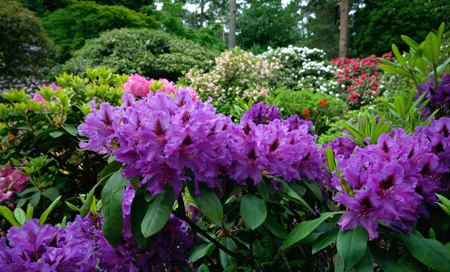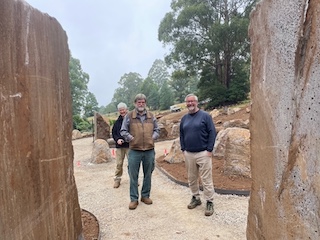ARS Victoria Newsletter – August 2015
This contribution from Richard Gilmour-Smith
Vireyas give me a lot of pleasure in winter as several are in bloom this winter here in Middle Park. I removed a tub of R. loranthiflorum a few days ago to a better spot where I can see it from the house as it approaches full bloom (photo upper left). The perfume - even in this cold weather - is a joy. It is choice species as it has never needed tip pruning to keep it in shape, most unusual for a Vireya, and has never been attacked by fungus. I’ve had it 5 years and it has now reached about a meter high. The photo at lower left is one of its hybrid descendants, “Sweet Seraphim”. Despite the promise, it has no perfume in this cold weather. The plant at middle right is ostensibly “Coral Flare”. I thought I had this hybrid until the heatwave of 2009 when I lost it along with my R. jasminiflorum, so I bought this as a replacement a year ago. It isn’t the same one. My original was like the photo on Vireya.net (photo upper right). My replacement has an unattractive floppy growth habit. The one I lost was a natural bushy type with internodes half the length of this one and it was a prolific flowerer, with the flowers being slightly smaller, more compact and of a softer colour than its replacement. The picture of “Coral Flare” on the upper right is exactly like the one I lost. Here you can see the blooms are
more compact than in mine.
Finally, “Eastern Zanzibar” (lower right) behaves like a cool climate rhododendron and is happy in the garden, although it needs sun protection and regular Mancozeb. The photo was taken late when the pink has become harsh and so the bi-colour effect is lost. Despite it being prone to fungus disease it is a good doer and is easy to strike. I think it grows too big for


Latest Newsletters
- Emu Valley
- ARS Victoria
- Emu Valley
- ARS Victoria



